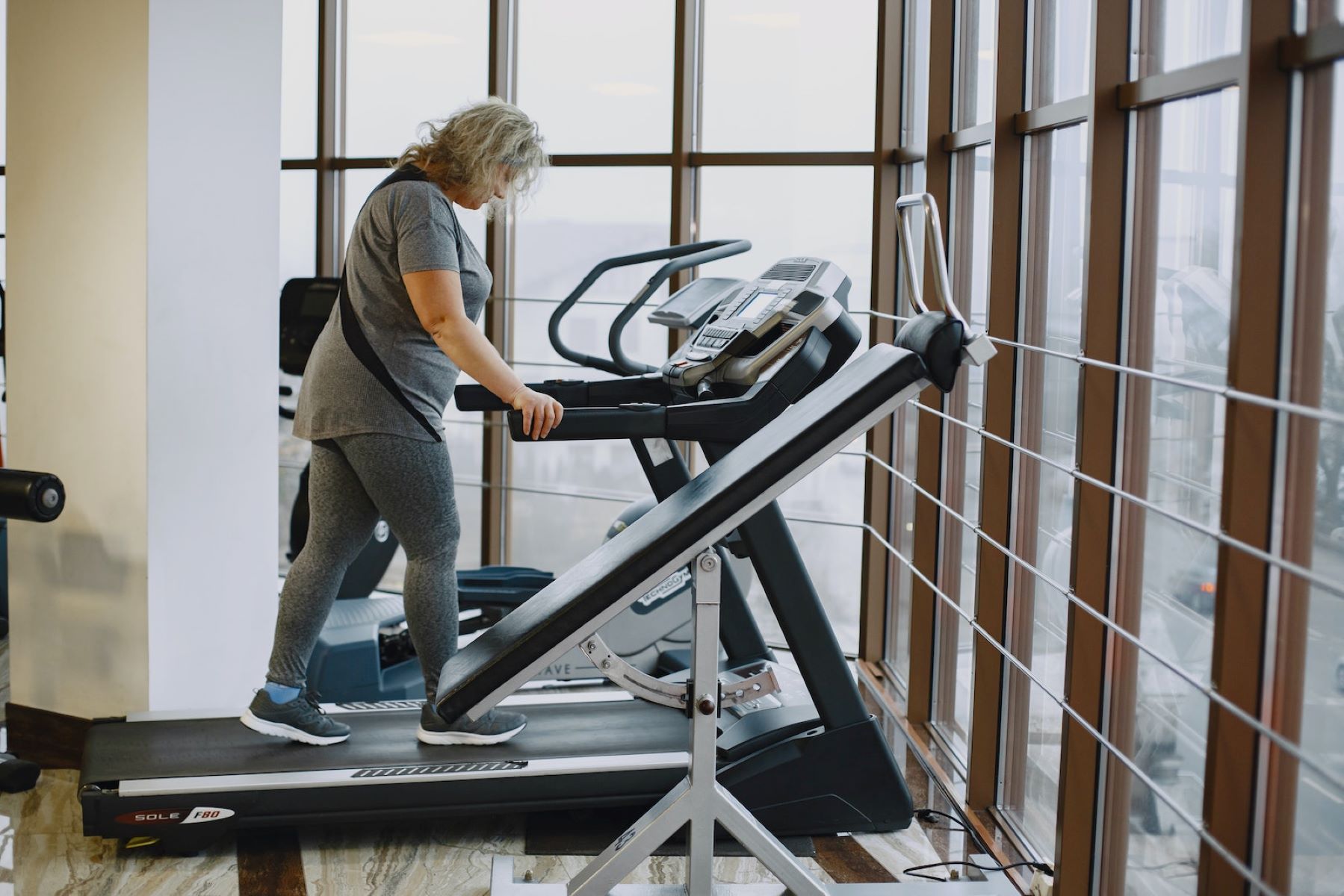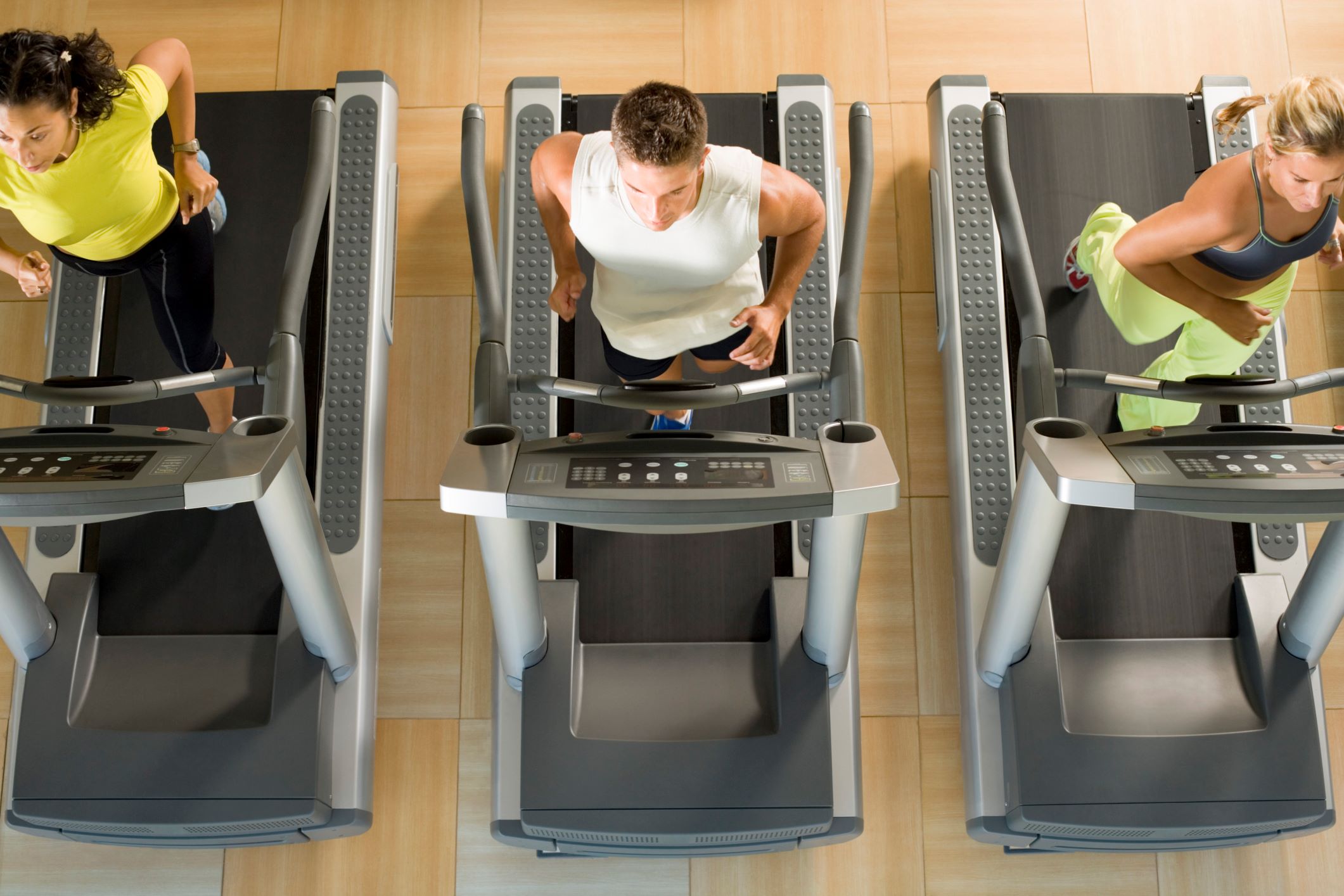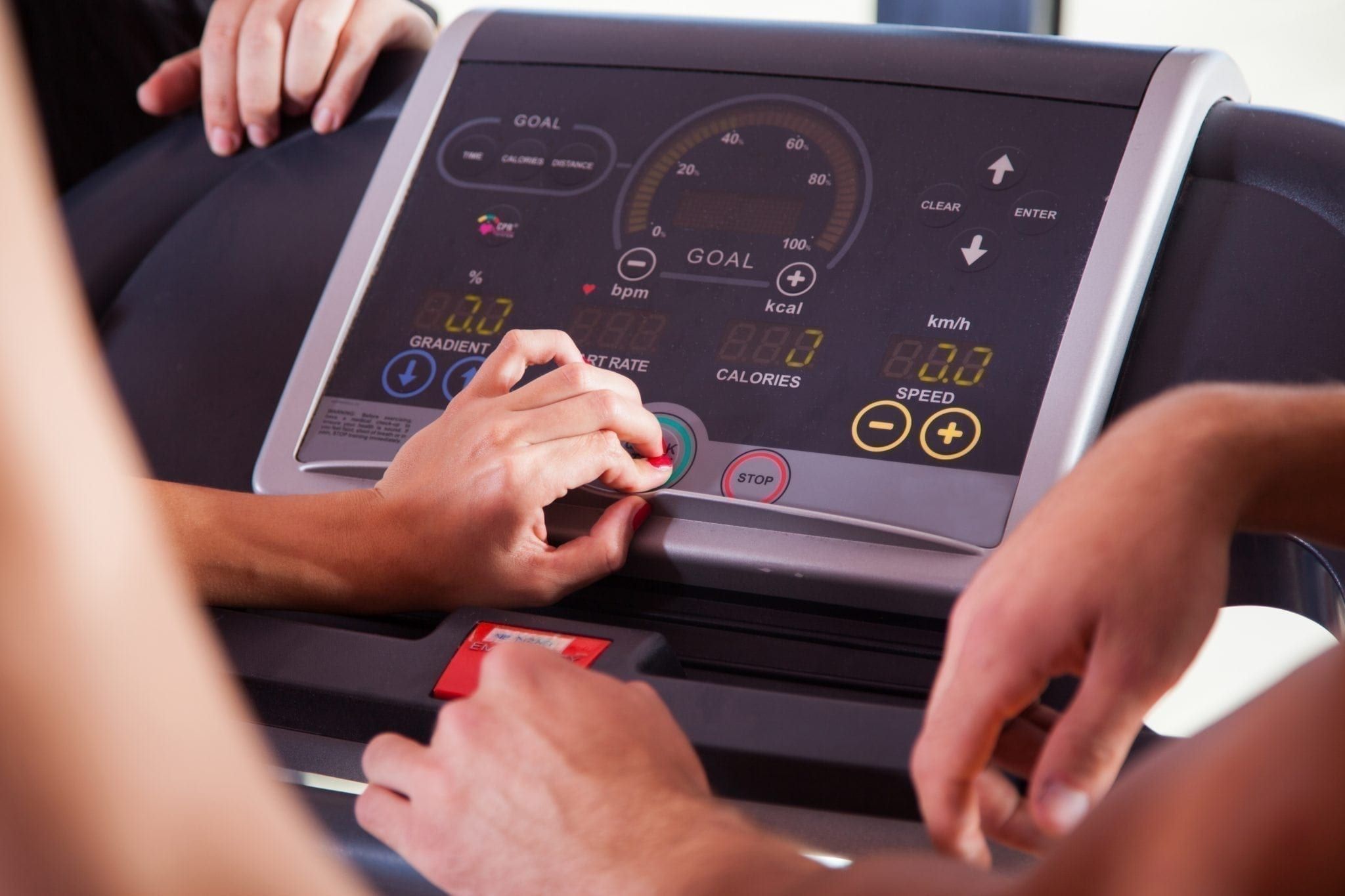Home>Misc>Featured>How Many Calories Do You Burn Through Interval Training On Treadmill


Featured
How Many Calories Do You Burn Through Interval Training On Treadmill
Modified: January 22, 2024
Get featured as we reveal how many calories you can burn through interval training on a treadmill, helping you achieve your fitness goals faster.
Introduction
Welcome to the world of interval training on a treadmill, where you can optimize your calorie burn and push your aerobic capacity to new heights. If you’re looking to amp up your workouts and achieve maximum results in minimal time, then interval training is the way to go. This popular fitness approach involves alternating periods of high-intensity exercise with periods of lower intensity or rest. The intense bursts of activity not only challenge your cardiovascular system but also help you burn calories long after your workout is over.
Interval training has gained widespread recognition for its effectiveness in improving overall fitness levels, boosting metabolism, and burning calories. And when it comes to performing interval training, treadmills provide a convenient and controlled environment to achieve your fitness goals.
In this article, we will explore the benefits of interval training on a treadmill, factors that affect calorie burn, and how to calculate the calories burned during your workout. We will also provide a sample interval training workout to get you started on your journey to a fitter, healthier you.
So, if you’re ready to take your treadmill workouts to the next level and shed those extra pounds, let’s dive deeper into the world of interval training and discover the secrets to maximizing your calorie burn.
What is Interval Training?
Interval training is a form of exercise that involves alternating periods of high-intensity exercise with periods of lower intensity or rest. This structured approach to training challenges both your aerobic and anaerobic systems, helping you to improve your endurance, speed, and overall fitness level.
The high-intensity intervals push your body to its limit, quickly elevating your heart rate and increasing the demand for oxygen. During these intervals, you perform exercises or activities that require maximum effort and exertion, such as sprinting, jumping jacks, or burpees. These intense bursts of activity are typically followed by shorter periods of recovery or low-intensity exercise, allowing your body to catch its breath and partially recover before the next round of high-intensity exercise.
Interval training can be done with various types of workouts, including running, cycling, swimming, and, of course, on a treadmill. The versatility of interval training allows you to customize your workouts based on your fitness level, goals, and preferences.
One of the significant advantages of interval training is its ability to raise your metabolism and calorie burn long after the workout is completed. This is known as the “afterburn effect” or excess post-exercise oxygen consumption (EPOC). During intense exercise, your body accumulates a deficit of oxygen, and after your workout, it needs to restore the balance. This process requires energy and boosts your metabolism, leading to increased calorie burn for hours after you finish exercising.
Interval training also offers a time-efficient way to work out. Since you alternate between high-intensity and low-intensity periods, you can achieve excellent results in a shorter amount of time compared to steady-state cardio exercises. This makes interval training a popular choice for individuals with busy schedules or those who prefer a more dynamic and challenging workout.
By incorporating interval training into your fitness routine, you can take your workouts to the next level, improve your endurance, and burn more calories. In the next section, we will delve into the specific benefits of interval training on a treadmill.
Benefits of Interval Training on a Treadmill
Interval training on a treadmill offers a range of benefits that can help you achieve your fitness goals more efficiently. Whether you’re aiming to lose weight, improve cardiovascular health, or enhance your athletic performance, incorporating interval training into your treadmill workouts can provide significant advantages. Here are some key benefits:
- Increased Calorie Burn: Interval training on a treadmill is an effective way to burn calories. The alternating periods of high-intensity and low-intensity exercise keep your body guessing and push your metabolism into high gear. This elevated metabolic rate can lead to increased calorie burn during and after your workout.
- Improved Cardiovascular Fitness: Interval training on a treadmill challenges your cardiovascular system by incorporating periods of intense effort. This helps to strengthen your heart, improve lung capacity, and enhance overall cardiovascular endurance. Over time, this can lead to improved aerobic fitness and better performance in other physical activities.
- Time Efficiency: Treadmill interval training allows you to maximize your workout time. Since you’re alternating between high-intensity and low-intensity intervals, you can achieve the same cardiovascular benefits in a shorter amount of time compared to steady-state cardio workouts. This makes it ideal for busy individuals who want to make the most of their limited exercise time.
- Better Fat Burning: Interval training has been shown to be effective in targeting visceral fat, which is the fat that surrounds your internal organs and poses a higher risk to your health. The intense bursts of exercise during intervals help to increase fat oxidation, leading to a greater reduction in body fat percentage.
- Muscle Endurance and Strength: Interval training on a treadmill engages a variety of muscle groups, including your leg muscles, core, and even upper body if you incorporate incline or resistance settings. The repeated cycles of high-intensity efforts build muscle endurance and strength over time, enhancing your athletic performance and overall fitness.
- Mental Endurance: Interval training on a treadmill requires mental focus and determination. Pushing through the intense intervals can help improve your mental stamina and resilience, not just in your workouts but in other areas of life as well.
- Customizability: Treadmills offer a range of options for interval training, allowing you to customize your workouts based on your fitness level and goals. You can adjust the speed, incline, or resistance to create the desired level of intensity during your high-intensity intervals, making it suitable for individuals of all fitness levels.
By incorporating interval training into your treadmill workouts, you can enjoy these benefits and take your fitness journey to new heights. In the next section, we will explore the factors that can affect the number of calories burned during interval training on a treadmill.
Factors Affecting Calorie Burn
Several factors can influence the number of calories burned during interval training on a treadmill. Understanding these factors can help you optimize your workouts and achieve your desired calorie burn. Here are the key factors that can affect the calorie burn during your treadmill interval training:
- Intensity: The intensity of your intervals plays a crucial role in determining calorie burn. Higher intensity intervals require more energy and result in a greater calorie expenditure. To maximize calorie burn, push yourself to perform at a challenging intensity during the high-intensity intervals.
- Duration: The length of your interval training session can also impact the calorie burn. Longer workouts tend to burn more calories, but it’s important to find a balance between duration and intensity. It’s better to have shorter, high-intensity intervals rather than longer, low-intensity intervals to achieve optimal calorie burn.
- Rest and Recovery: The recovery periods between your high-intensity intervals are essential for allowing your body to partially recover before the next burst of effort. By taking adequate rest, you can maintain the intensity during each interval, ensuring a higher calorie burn overall.
- Body Weight: The number of calories burned during exercise is influenced by body weight. A higher body weight requires more energy expenditure to perform the same activity as compared to a lower body weight. Therefore, people with higher body weights may burn more calories during interval training on a treadmill.
- Age and Gender: Age and gender can also affect calorie burn. Generally, younger individuals tend to have a higher metabolic rate and burn more calories during exercise. Additionally, men generally have more muscle mass, which can contribute to a higher calorie burn compared to women.
- Fitness Level: Your current fitness level can impact calorie burn during interval training. As your fitness improves, your body becomes more efficient at utilizing energy, which can lead to reduced calorie burn. To continue challenging your body, gradually increase the intensity or duration of your intervals as your fitness level improves.
- Additional Factors: Other factors such as genetics, individual differences in metabolism, and environmental conditions can also play a role in calorie burn. These factors can vary from person to person, so it’s important to focus on consistent effort and progression in your workouts rather than comparing yourself to others.
Keep in mind that while these factors can influence calorie burn, the most important aspect of interval training is consistency. By regularly incorporating treadmill interval training into your fitness routine, you can maximize calorie burn, improve cardiovascular health, and reach your fitness goals. In the next section, we will discuss how to calculate the calories burned during interval training on a treadmill.
Calculating Calories Burned During Interval Training
While it’s difficult to obtain exact calorie burn numbers during interval training on a treadmill, you can make estimates using various methods. Keep in mind that these calculations are approximations and can differ based on individual factors, such as weight, fitness level, and intensity. Here are a few methods to help you estimate the calories burned during your interval training:
- Heart Rate Monitoring: Using a heart rate monitor during your treadmill interval training can provide a more accurate estimation of calorie burn. Many treadmills come with built-in heart rate monitors, or you can use a wearable device. By inputting your age, weight, and other relevant data, the monitor calculates your heart rate zones and estimates the number of calories burned based on your heart rate during the workout.
- Online Calorie Calculators: Online calorie calculators provide a convenient way to estimate calorie burn during interval training. These calculators allow you to input details such as age, weight, duration, and type of exercise. Based on this information, the calculator provides an approximation of the calories burned. While not as accurate as heart rate monitoring, it can still give you a general idea of your calorie expenditure.
- Metabolic Equations: Metabolic equations are based on scientific formulas that estimate calorie burn during exercise. These equations take into account factors such as weight, duration, and intensity of the workout. While they may not provide precise numbers, they can give you a baseline estimate to work with. Consulting with a fitness professional or using online resources can help you determine the appropriate metabolic equation to use.
- Activity Trackers: Activity trackers or fitness apps on your smartphone can also provide an estimate of the calories burned during your treadmill interval training. These devices track your steps, distance, heart rate, and other metrics to calculate the calorie burn. While the accuracy may vary across different devices, they can still be useful in monitoring and comparing your workouts over time.
Remember that these methods provide estimations, and the actual calorie burn can vary. However, using them consistently can help you track your progress and make adjustments to your workouts as needed.
It’s important to note that calorie burn is just one aspect of your fitness journey. While it can be motivating to track, it’s equally crucial to focus on other indicators of progress, such as improved endurance, strength, and overall well-being. Instead of obsessing over the numbers, strive for consistency, challenge yourself during each workout, and listen to your body’s signals.
Now that we have explored the factors affecting calorie burn and the ways to estimate it, let’s move on to the next section where we will provide a sample treadmill interval training workout to get you started.
Sample Interval Training Workout
To help you get started with interval training on a treadmill, we have designed a sample workout that you can follow. This workout incorporates a combination of high-intensity intervals and recovery periods to maximize calorie burn and improve cardiovascular fitness. Remember to warm up for a few minutes with light jogging or walking before starting the workout. Here is the sample treadmill interval training workout:
- Warm-up: Start with a 5-minute warm-up at a comfortable pace. This helps to prepare your body for the upcoming high-intensity intervals.
- Interval Set 1:
- Sprint: Increase the treadmill speed to a challenging sprint pace for 30 seconds.
- Recovery: Reduce the speed to a light jog or walk for 60 seconds to recover.
- Repeat the sprint and recovery cycle 5-8 times (adjust based on your fitness level).
- Interval Set 2 (Incline Intervals):
- Incline Run: Increase the treadmill incline to a moderate level and run at a challenging pace for 60 seconds.
- Recovery Walk: Lower the incline and slow down to a comfortable walking pace for 90 seconds to recover.
- Repeat the incline run and recovery walk cycle 5-8 times.
- Interval Set 3 (Pyramid Intervals):
- 45-Second Sprint: Increase the treadmill speed to a fast sprint pace for 45 seconds.
- Recovery Jog: Reduce the speed to a light jog for 30 seconds.
- 30-Second Sprint: Increase the speed even more for a faster sprint for 30 seconds.
- Recovery Walk: Slow down to a comfortable walking pace for 45 seconds.
- 15-Second Sprint: Push your speed to a maximum effort sprint for 15 seconds.
- Recovery Walk: Slow down to a walking pace for 60 seconds.
- Repeat the pyramid cycle 2-3 times.
- Cool-down: Finish the workout with a 5-minute cool-down at a slower pace (jog or walk) to gradually lower your heart rate and allow your body to recover.
Feel free to modify the intensity, duration, or number of intervals based on your fitness level and preferences. Remember to listen to your body, stay hydrated, and maintain proper form throughout the workout. As you progress, you can gradually increase the intensity or duration of the intervals to continue challenging yourself.
Interval training on a treadmill can be a demanding yet rewarding workout. It helps to keep your workouts exciting and engaging while providing numerous health benefits. Experiment with different interval combinations and timings to find what works best for you.
Now that you have a sample treadmill interval training workout, you’re ready to take your fitness to the next level. Stay consistent, stay motivated, and enjoy the fantastic results that interval training can bring. Keep pushing, and you’ll achieve your fitness goals in no time!
Conclusion
Interval training on a treadmill is a powerful tool that can take your workouts to new heights and help you achieve your fitness goals. By incorporating high-intensity intervals and recovery periods into your treadmill workouts, you can increase calorie burn, improve cardiovascular fitness, and enhance overall endurance.
We explored the benefits of interval training on a treadmill, including increased calorie burn, improved cardiovascular fitness, and efficient use of workout time. Factors such as intensity, duration, rest, body weight, age, gender, and fitness level can impact the number of calories burned during interval training. By understanding these factors, you can optimize your workouts and achieve better results.
We discussed different methods to estimate calorie burn during interval training, such as heart rate monitoring, online calculators, metabolic equations, and activity trackers. While these methods provide approximations, they can help you track your progress and make adjustments to your workouts as needed.
Additionally, we provided a sample treadmill interval training workout to help you get started. This versatile workout can be modified to meet your fitness level and preferences. By following the sample workout or creating your own interval combinations, you can make your treadmill workouts more exciting and challenging.
Remember, consistency and progression are key when it comes to interval training. Stay committed to your workouts, listen to your body, and gradually increase the intensity or duration of your intervals as your fitness improves. Celebrate your achievements along the way and don’t forget to focus on other indicators of progress, such as increased strength, endurance, and overall well-being.
Now that you’re armed with knowledge about interval training on a treadmill, it’s time to lace up your sneakers and hit the gym. Embrace the intensity, push past your limits, and watch as your fitness levels soar. With dedication and consistent effort, you’ll be well on your way to achieving a healthier, stronger, and more fit version of yourself.









